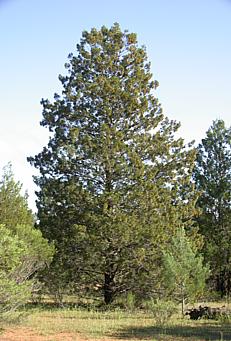- Callitris
Taxobox
name = "Callitris"

image_width = 240px
image_caption = "Callitris preissii"
regnum =Plantae
divisio =Pinophyta
classis = Pinopsida
ordo =Pinales
familia =Cupressaceae
subfamilia = Callitroideae
genus = "Callitris"
genus_authority = Vent.
subdivision_ranks = Species
subdivision =
*Sect. "Callitris""Callitris baileyi " "Callitris canescens " "Callitris columellaris " "Callitris drummondii " "Callitris endlicheri " "Callitris monticola " "Callitris muelleri " "Callitris neocaledonica " "Callitris oblonga " "Callitris preissii " "Callitris rhomboidea " "Callitris roei " "Callitris sulcata " "Callitris verrucosa "
*Sect. "Octoclinis""Callitris macleayana ""Callitris" is a genus of
conifer oustree s in theCupressaceae (cypress family). There are 15 species in the genus, of which 13 are native toAustralia and the other two ("C. neocaledonica, C. sulcata") native toNew Caledonia . The most widely used common name is cypress-pine, a name shared by the closely related genus "Actinostrobus ".They are small to medium-sized
tree s or largeshrub s, reaching 5-25 m tall (to 40 m in "C. macleayana"). The leaves areevergreen and scale-like, except young seedlings, where they are needle-like; in "C. macleayana", needle-like leaves are found mixed with scale leaves throughout the tree's life. The scales are arranged in six rows along the twigs, in alternating whorls of three (often in whorls of four in "C. macleayana").The male cones are small, 3-6 mm long, and are located at the tips of the twigs. The female cones start out similarly inconspicuous, maturing in 18-20 months to 1-3 cm long and wide, globular to ovoid (acute in "C. macleayana"), with six overlapping, thick, woody scales, arranged in two whorls of three (often 8 scales in "C. macleayana"). The cones remain closed on the trees for many years, opening only after being scorched by a
bushfire ; this then releases theseed s to grow on the newly cleared burnt ground.The genus is divided into two sections, with the atypical "C. macleayana" in sect. "Octoclinis", and all the other species in sect. "Callitris". Some botanists treat "C. macleayana" in a separate genus, as "Octoclinis macleayana". "C. macleayana" is also distinct in occurring in
rainforest on the east coast of Australia; the other species all grow on dry sites.The closest relatives of "Callitris" are "
Actinostrobus " from southwestWestern Australia , which differs in its cones having several basal whorls of small sterile scales, and "Neocallitropsis " from New Caledonia, distinct in its needle-like leaves throughout the life of the plant (not just seedlings) and always arranged in whorls of four (not three).The wood of cypress-pines is light, soft and aromatic. It can be easily split and resists decay. It is used to make furniture, indoor and outdoor panelling, and fence posts. Cypress-pines are occasionally planted as ornamental trees, but their use is restricted by the high risks imposed by their very high flammability in bushfires."Callitris columellaris" is
naturalised in southernFlorida , where it is usually known by the synonym "Callitris glaucophylla".External links
* [http://www.conifers.org/cu/call/index.htm Gymnosperm Database - "Callitris"]
* [http://www.pinetum.org/cones/CAcones.htm Arboretum de Villardebelle - Photos of cones]
Wikimedia Foundation. 2010.
